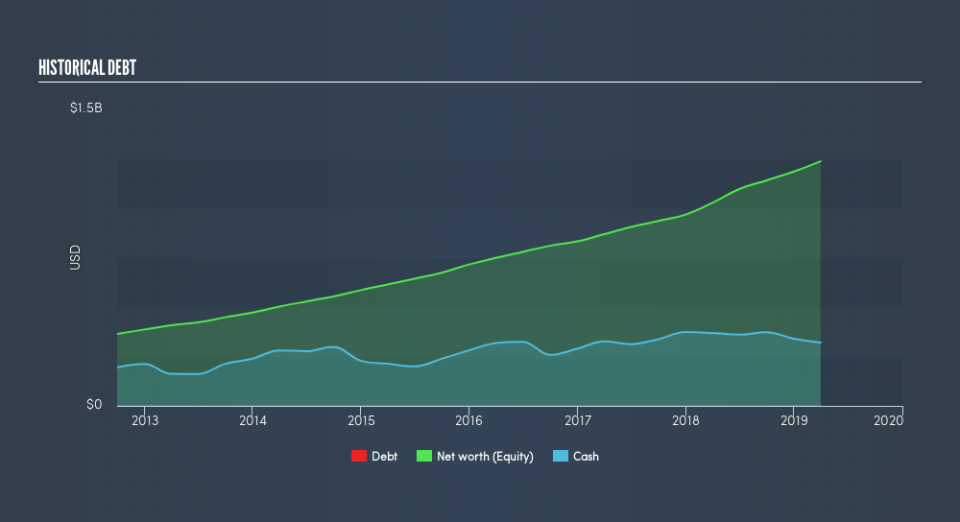What You Must Know About Globus Medical, Inc.'s (NYSE:GMED) Financial Health

Small-caps and large-caps are wildly popular among investors; however, mid-cap stocks, such as Globus Medical, Inc. (NYSE:GMED) with a market-capitalization of US$4.2b, rarely draw their attention. While they are less talked about as an investment category, mid-cap risk-adjusted returns have generally been better than more commonly focused stocks that fall into the small- or large-cap categories. This article will examine GMED’s financial liquidity and debt levels to get an idea of whether the company can deal with cyclical downturns and maintain funds to accommodate strategic spending for future growth. Remember this is a very top-level look that focuses exclusively on financial health, so I recommend a deeper analysis into GMED here.
Check out our latest analysis for Globus Medical
Does GMED face the risk of succumbing to its debt-load?
What is considered a high debt-to-equity ratio differs depending on the industry, because some industries tend to utilize more debt financing than others. Generally, mid-cap stocks are considered financially healthy if its ratio is below 40%. For GMED, the debt-to-equity ratio is zero, meaning that the company has no debt. It has been operating its business with zero debt and utilising only its equity capital. Investors' risk associated with debt is virtually non-existent with GMED, and the company has plenty of headroom and ability to raise debt should it need to in the future.
Does GMED’s liquid assets cover its short-term commitments?
Given zero long-term debt on its balance sheet, Globus Medical has no solvency issues, which is used to describe the company’s ability to meet its long-term obligations. But another important aspect of financial health is liquidity: the company’s ability to meet short-term obligations, including payments to suppliers and employees. With current liabilities at US$79m, it appears that the company has been able to meet these obligations given the level of current assets of US$618m, with a current ratio of 7.77x. The current ratio is calculated by dividing current assets by current liabilities. However, a ratio above 3x may be considered excessive by some investors, yet this is not usually a major negative for a company.
Next Steps:
GMED has no debt as well as ample cash to cover its short-term commitments. Its safe operations reduces risk for the company and its investors, but some degree of debt may also boost earnings growth and operational efficiency. I admit this is a fairly basic analysis for GMED's financial health. Other important fundamentals need to be considered alongside. I suggest you continue to research Globus Medical to get a more holistic view of the stock by looking at:
Future Outlook: What are well-informed industry analysts predicting for GMED’s future growth? Take a look at our free research report of analyst consensus for GMED’s outlook.
Valuation: What is GMED worth today? Is the stock undervalued, even when its growth outlook is factored into its intrinsic value? The intrinsic value infographic in our free research report helps visualize whether GMED is currently mispriced by the market.
Other High-Performing Stocks: Are there other stocks that provide better prospects with proven track records? Explore our free list of these great stocks here.
We aim to bring you long-term focused research analysis driven by fundamental data. Note that our analysis may not factor in the latest price-sensitive company announcements or qualitative material.
If you spot an error that warrants correction, please contact the editor at editorial-team@simplywallst.com. This article by Simply Wall St is general in nature. It does not constitute a recommendation to buy or sell any stock, and does not take account of your objectives, or your financial situation. Simply Wall St has no position in the stocks mentioned. Thank you for reading.

 Yahoo Finance
Yahoo Finance 
